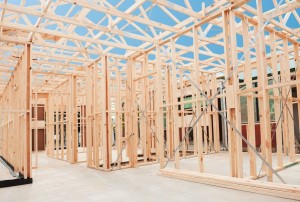 Structural engineers can play an integral role in inspecting and verifying the safety of a home. Whether you’re shopping for a home, preparing for a major renovation, or you need to assess your current dwelling, an engineer can perform a thorough review to help you identify any areas of concern as well as the extent of any damage that is present.
Structural engineers can play an integral role in inspecting and verifying the safety of a home. Whether you’re shopping for a home, preparing for a major renovation, or you need to assess your current dwelling, an engineer can perform a thorough review to help you identify any areas of concern as well as the extent of any damage that is present.
One essential service that structural engineers provide is a thorough inspection of residential properties. This inspection is valuable for people with limited knowledge of structural engineering who are concerned about potential issues with their homes or those they are considering buying.
Common Hidden Issues in Residential Structures
Foundation Problems
The foundation is the backbone of any building, and any issues with it can have severe consequences on the entire structure. Over time, soil movement and other factors can cause a foundation to settle or shift, leading to visible cracks or unevenness in walls and floors. These problems might be hidden from plain sight but could cause significant damage if left untreated.
Moisture intrusion is another common foundation problem that can lead to mold growth, damage from water, and also structural damage. When water seeps into the foundation, it can weaken the concrete and lead to cracks or other issues. Identifying and addressing these problems early on is essential to prevent costly repairs down the line.
Structural Damage
Wooden structural elements are susceptible to rot, which can weaken them and compromise their ability to support the building’s weight. Invasive pests, such as termites, can also cause significant damage to wooden structures, often hidden behind walls or other inaccessible areas.
Similar to wood, steel components can also be prone to damage. When exposed to moisture or certain environmental conditions, steel can corrode, leading to a loss of strength and potential structural failure. Detecting and addressing these problems early on can prevent more significant issues in the future.
Roof Issues
A sagging or uneven roof is a telltale sign of underlying structural issues. These problems can result from inadequate support, water damage, or other factors that weaken the roof structure.
Roof leaks can lead to extensive water damage and create an environment that encourages dangerous mold growth. If left unaddressed, this damage can compromise the structural integrity of the roof and even the entire home.
The Structural Engineer Home Inspection Process
Review of Construction Documents and Permits
The inspection process begins with a thorough review of any available construction documents and permits. This information helps the structural engineer understand the building’s history and identify any potential issues that may have arisen during construction or renovation.
Visual Inspection of the Property
During the exterior inspection, the engineer examines the building’s foundation, walls, and roof for any visible signs of damage or potential issues. They also assess the property’s drainage and grading to identify any concerns related to water intrusion or erosion.
The interior inspection involves a careful examination of load-bearing walls, floors, and ceilings for signs of structural damage or weakness. The engineer also evaluates any visible cracks, water damage, or other potential issues that could indicate hidden problems.
Specialized Testing and Analysis
In some cases, the structural engineer may recommend soil testing to evaluate the ground’s bearing capacity and potential for settlement or erosion. This information can help detect any underlying issues that could affect the building’s foundation and overall stability.
A structural integrity assessment, another type of specialized test, involves analyzing the building’s materials, structural design, and construction methods to determine its overall strength and ability to withstand loads and stresses. This analysis can reveal any potential weaknesses or vulnerabilities that may require attention or repair.
How Structural Engineer Home Inspections Benefit Homeowners
Identifying Potential Safety Hazards
One of the primary benefits of a structural engineer’s inspection is the identification of potential safety hazards. By uncovering hidden issues, the engineer can help homeowners address these problems before they escalate, protecting the occupants’ safety.
Preventing Costly Future Repairs
Addressing structural issues early on can save homeowners a significant amount of money in the long run. By identifying and resolving potential problems, a structural engineer’s inspection can prevent the need for more extensive, costly repairs in the future.
Ensuring Compliance with Building Codes and Regulations
An inspection can help homeowners ensure their property meets all applicable building codes and regulations. This compliance is essential not only for safety reasons but also for legal and insurance purposes.
Enhancing Property Value and Marketability
A home with a clean bill of structural health can be more attractive to potential buyers, as it demonstrates that the property has been well-maintained and is free of significant issues. This added assurance can enhance the property’s value and marketability.
When to Consider a Structural Engineer Home Inspection
Before Purchasing a New Home
A thorough inspection is crucial when considering buying a new home, as it can reveal any hidden issues that may impact the property’s value or safety. This information can help buyers make an informed decision and potentially negotiate a better deal.
When Planning a Major Renovation or Addition
If you’re planning a significant renovation or addition to your home, a structural engineer’s inspection can ensure that the existing structure can support the new changes and that the project complies with all relevant codes and regulations.
If Visible Signs of Structural Issues are Present
If you notice visible signs of potential structural issues, such as cracks, water damage, or uneven floors, it’s essential to have a structural engineer inspect the property to determine the cause and recommend appropriate solutions.
After a Natural Disaster or Extreme Weather Event
After a natural disaster or weather event of extreme nature, such as an earthquake, hurricane, or tornado, a structural engineer’s inspection can help assess any damage and determine whether the building is safe for occupancy.
Choosing the Right Structural Engineer for Your Home Inspection
Verifying Credentials and Experience
When selecting a structural engineer for your inspection, it’s crucial to verify their credentials and experience. Look for professionals with a strong track record and relevant qualifications, such as a Professional Engineer (PE) license.
Asking for References and Reviews
Ask the structural engineer for references and read reviews from past clients to get a sense of their work quality and customer service.
Ensuring Clear Communication and Detailed Reporting
Choose a structural engineer who communicates clearly and provides detailed inspection reports, including explanations of any issues found and recommendations for remediation.
Get a Structural Engineer Home Inspection for Your North Carolina Home
The importance of a structural engineer’s inspection in maintaining the safety and integrity of residential properties cannot be overstated. By identifying hidden issues and providing expert guidance on addressing them, they play a vital role in protecting homeowners and their investments.
At Structural Innovations, our engineers provide home inspections for residents of Charlotte, North Carolina, and the surrounding metro area. To schedule your own residential inspection, contact us today.
Related: How Does a Foundation Inspection Work?

